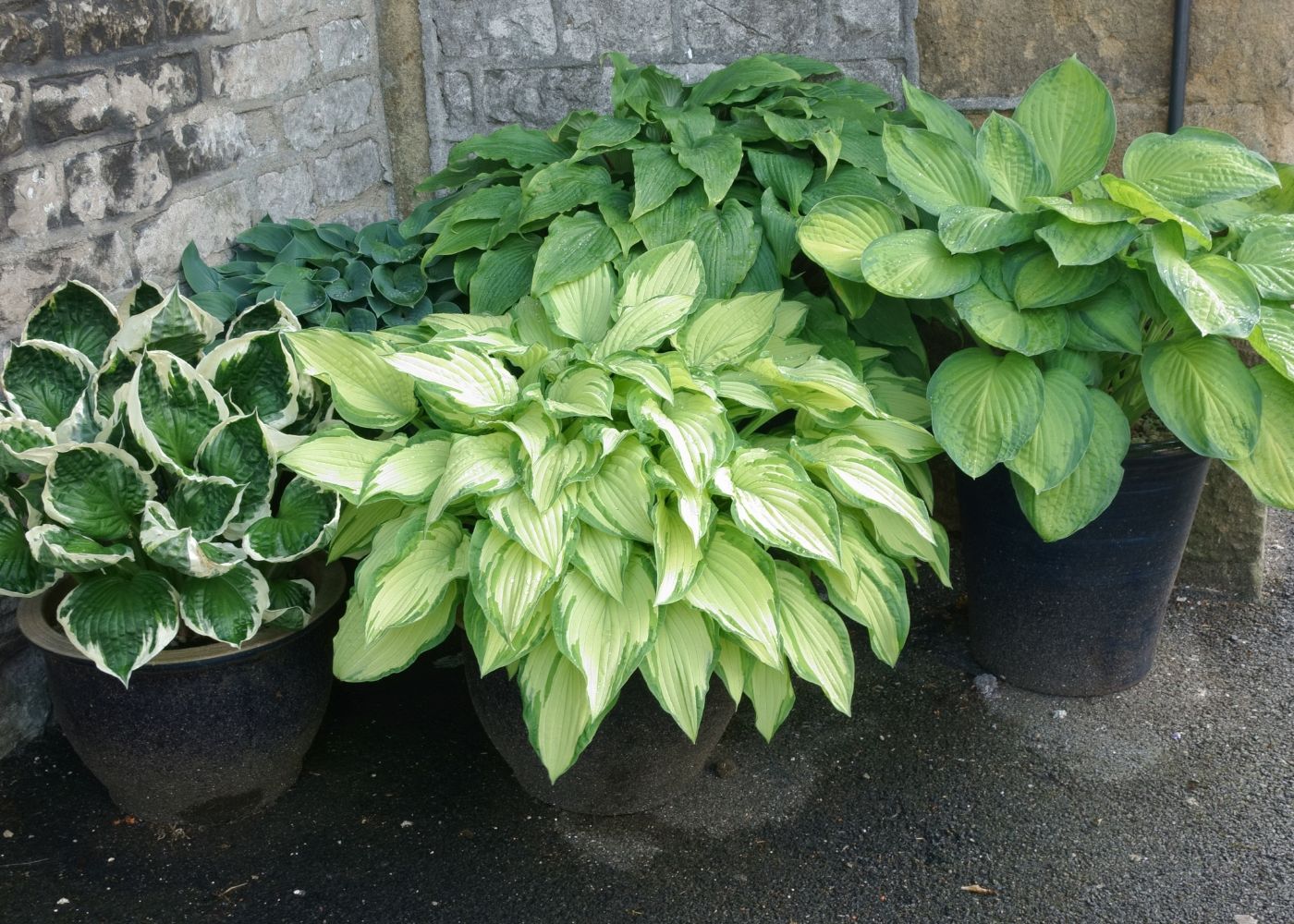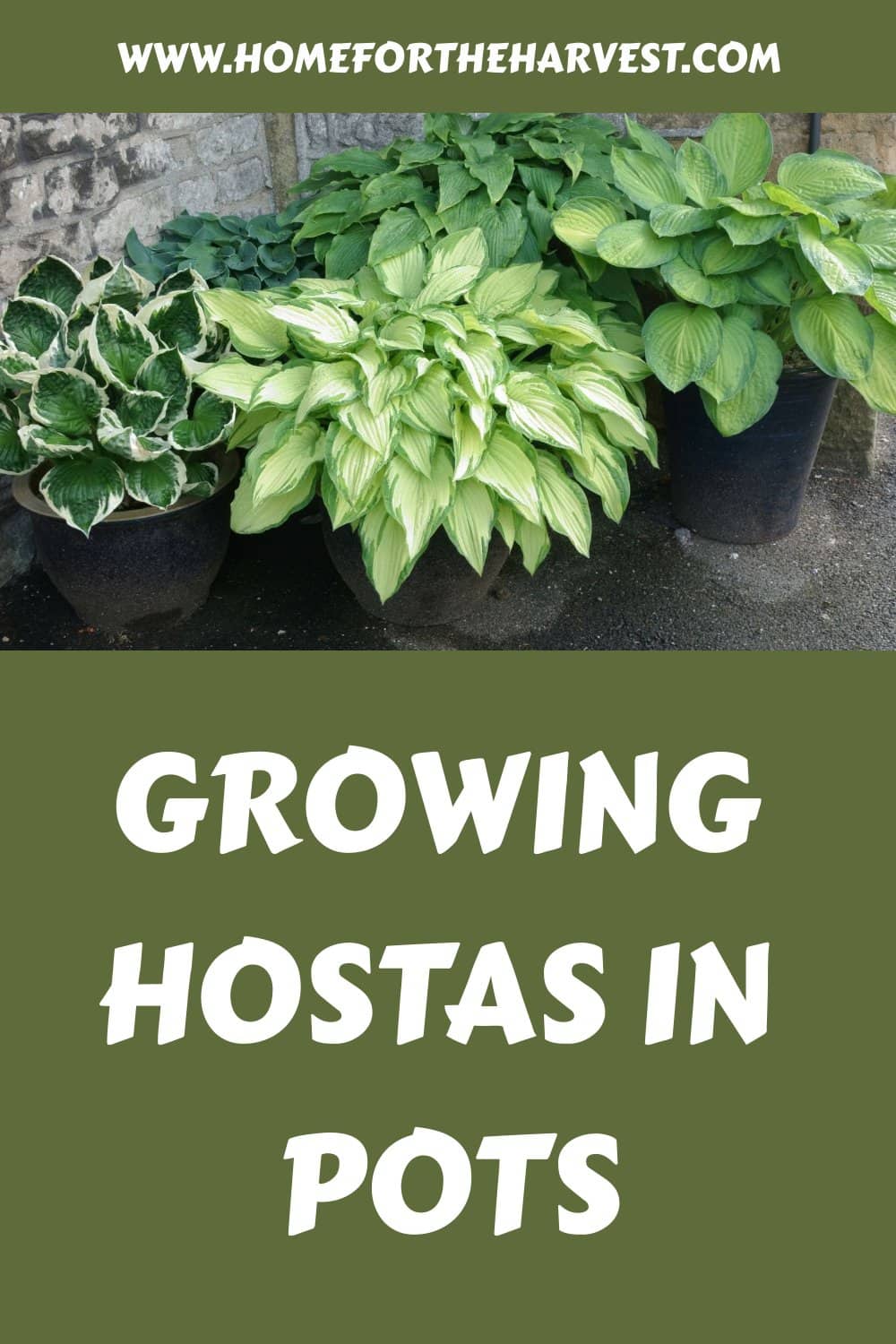Most hosta varieties can easily be grown in pots. The containers should be large enough to accommodate several years of root growth and should also have an effective drainage hole at the bottom.
Hostas in pots do need to be watered and fed with fertilizer quite frequently. Container hostas are generally placed in a garage or sheltered outdoor location during the winter for their cold dormancy period.
Introduction to growing hostas in pots
Hostas in pots are surprisingly easy to grow. Potted hostas are also a fantastic way to add versatility and visual appeal to patios, balconies, and small gardens.
Start with a breathable pot larger than the hosta’s existing planter. Use a high-quality potting mix and consider enriching the soil with organic fertilizer and/or organic matter. Be sure to water the planter every few days (or even every day if temperatures are quite hot).
There are a few things to keep in mind when growing hostas in pots. First, hostas prefer slightly acidic soil, so be sure to use an appropriate potting mix or amend the soil as needed. Smaller pots can be filled with soil-free mix (most potting soils), but larger pots usually have a little bit of natural outdoor soil added, as sand, clay, and silt can help retain water.
Regular watering and partial to full shade conditions are crucial for the health of potted hostas. Second, hostas are heavy feeders, so you’ll need to fertilize regularly throughout the growing season. A general-purpose fertilizer or hosta-specific fertilizer is fine. A starter fertilizer can be mixed into the potting soil during planting, and slow-release fertilizer can be sprinkled on the soil surface during spring and early summer. You can also use a spray foliar feed.
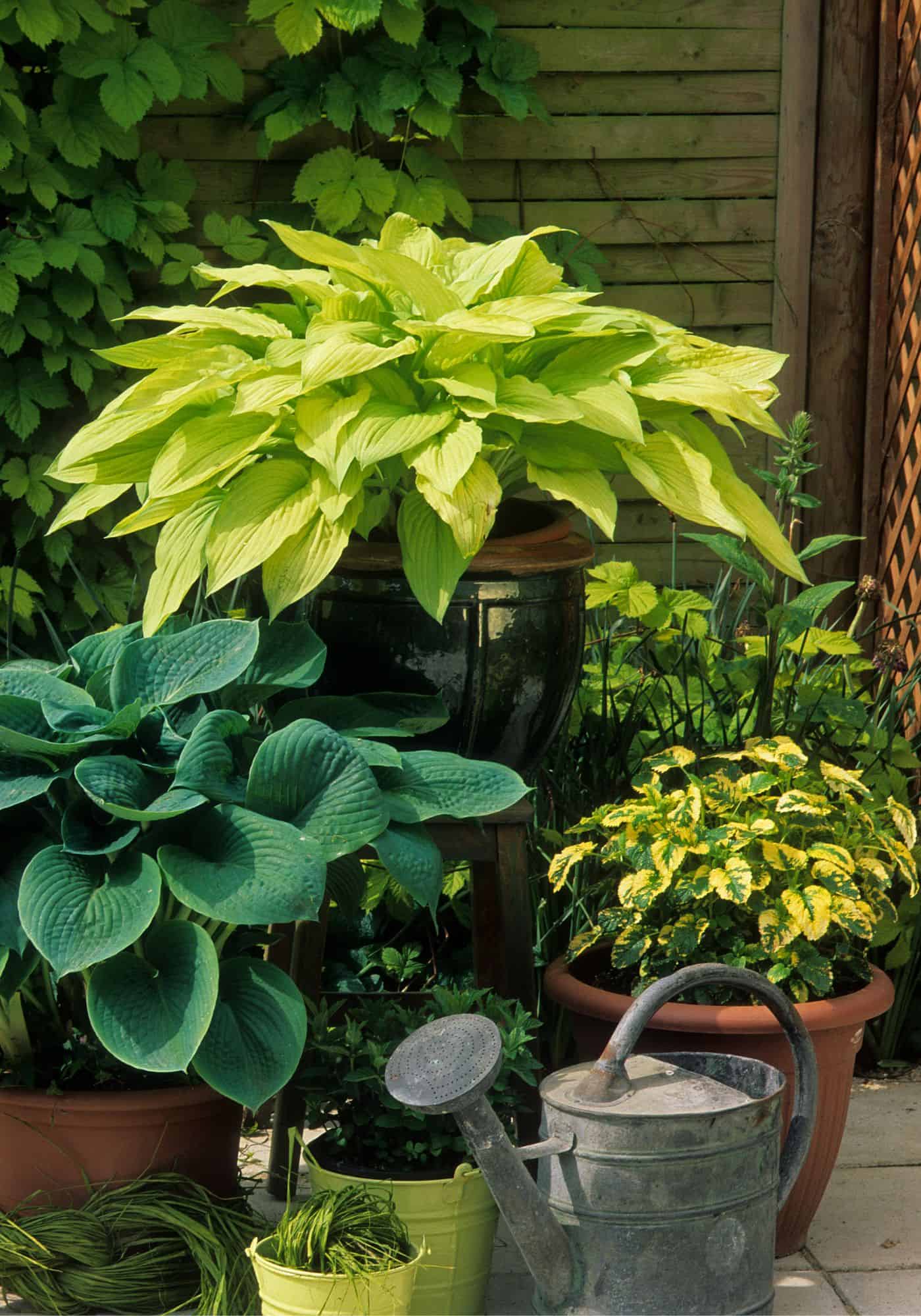
Third, hostas in the ground are quite drought tolerant, but they will perform best in pots if they’re kept evenly moist. Hostas in pots do not have access to the natural water table and need to be watered a few times a week. Take special care during hot weather, as the plants usually do best when watered every day. Always check to make sure the drainage hole is working effectively to let the excess water drain.
Finally, hostas go dormant in the winter and prefer a cool, dark location during this time. A garage or other sheltered spot is ideal. You can also dig a hole in the garden in the fall and place the pot in the hole so that the roots experience winter belowground (as they would if planted in the garden).
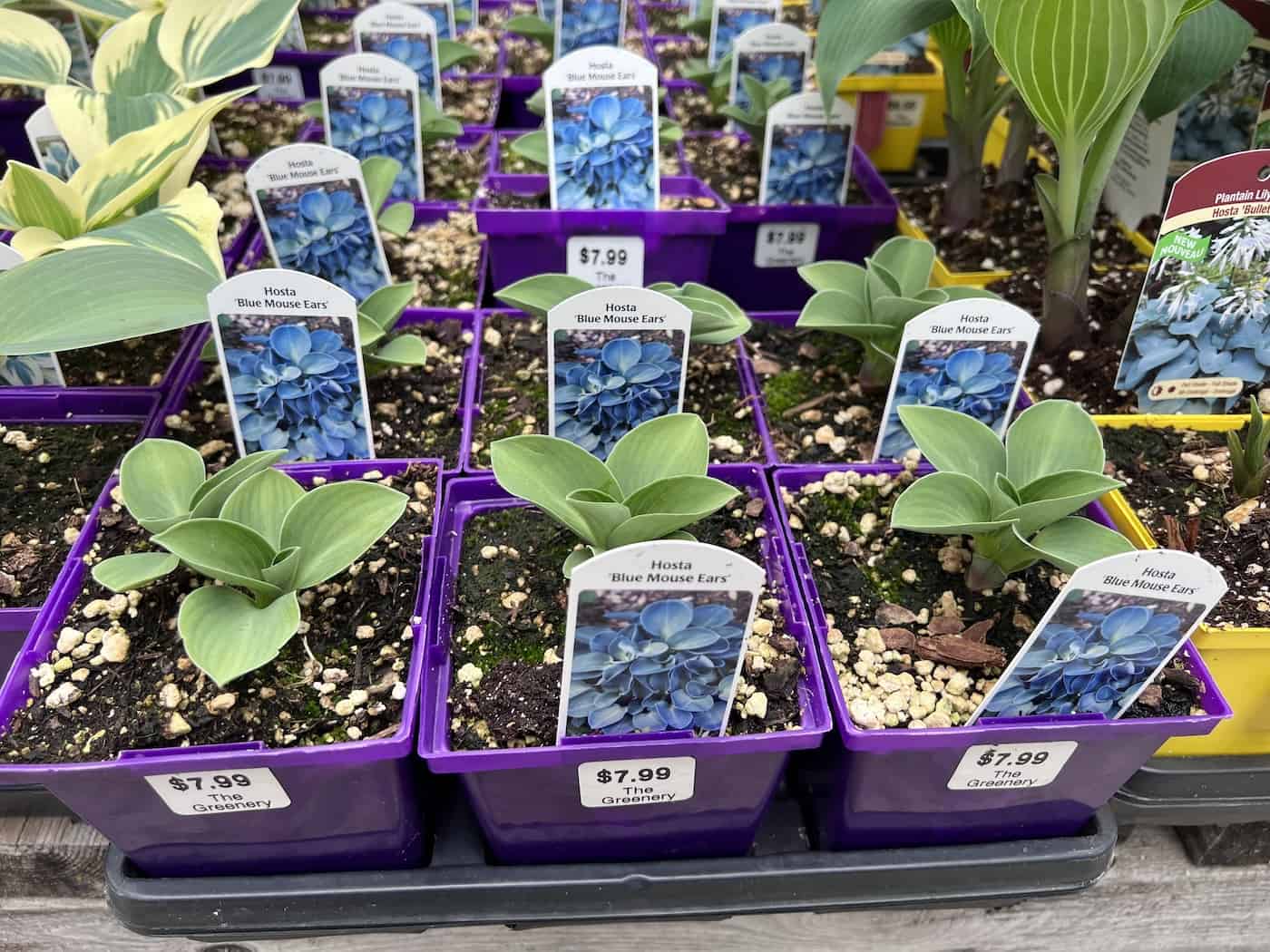
How to plant hostas in pots
Here are the basic steps for planting hostas in pots:
- Start with a breathable pot like terra cotta or another unglazed ceramic. It should be a little bit larger than the hosta’s current pot and should also have a drainage hole (or holes) at the bottom.
- If the drainage hole is quite wide, cover the hole with some mesh, hardware cloth, landscape fabric, or a broken piece of another pot. Cover it loosely so that water can still drain easily while the soil stays in the pot.
- Fill the pot about half full (depending on the size) with potting mix. Mix in some starter fertilizer. You can also mix in some organic matter like compost or rotted manure. Larger containers can also handle some natural mineral-based soil (sand, silt, and clay).
- Water the potting mix to wet the soil and help it settle down into the base of the pot.
- Pull the hosta out of its plastic nursery pot. Check for thick white circling roots around the bottom of the root ball. If there are circling roots, gently loosen them up and pull them away from the mass of the rootball.
- Place the hosta into the pot. Align the soil at the base of the plant so that the soil level is about an inch below the top of the planter pot. You may need to add or remove soil from the pot to get the soil level correct.
- Backfill the pot with potting mix, tamping it down gently as you go.
- Water the hosta well to help settle the soil.
- Top-dress the hosta with a slow-release fertilizer according to package directions.
- For larger pots, mulch the soil surface with some compost or hardwood chips, keeping the mulch from touching the stems of the plant itself.
- Place the pot in a good location in terms of sunlight. Most varieties do best with a few hours of morning sun in cooler climates (zones 3-6) and with shade in the afternoon.
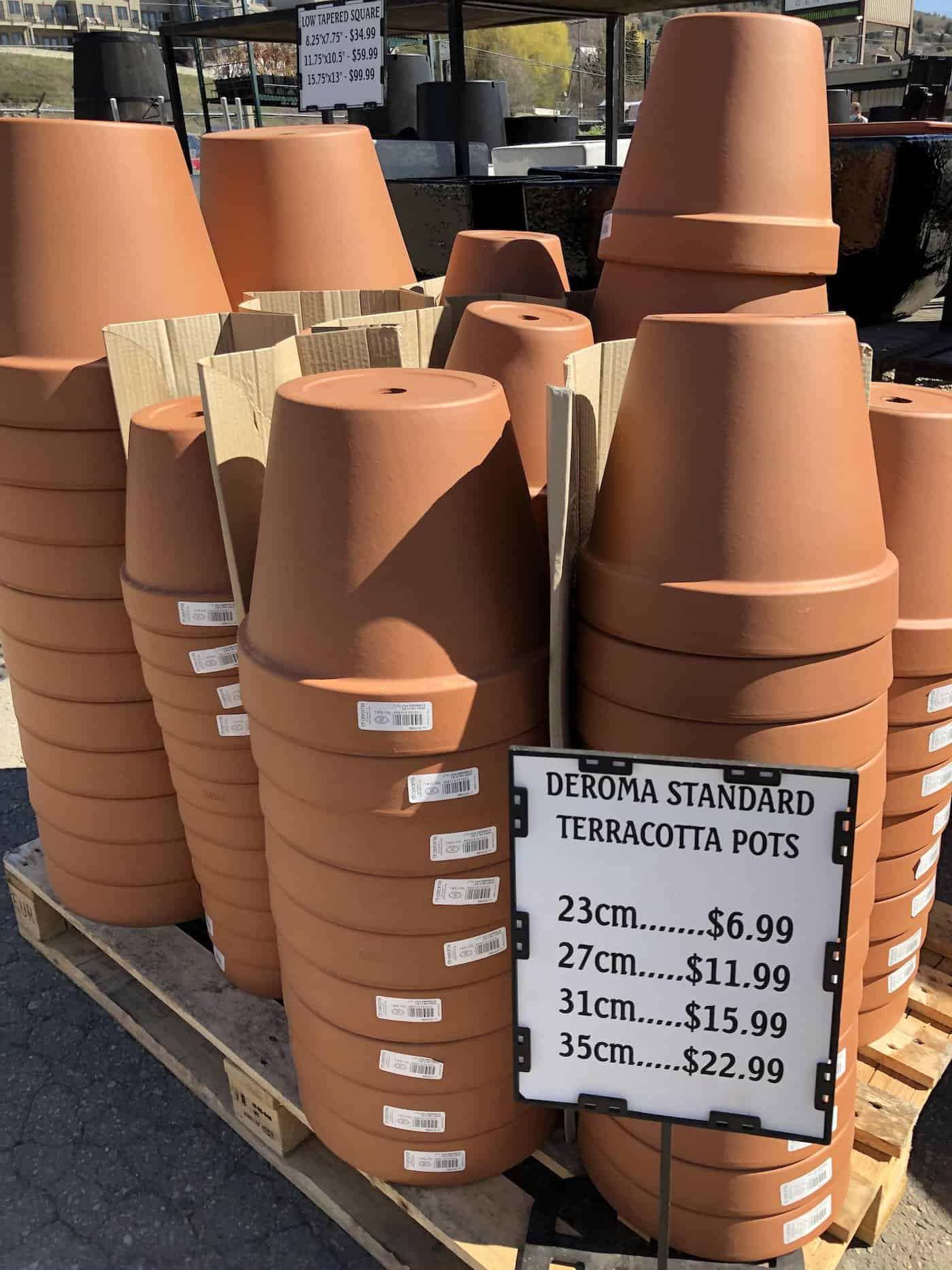
Good pots for growing hostas
The best pots for growing hostas are large containers made of a breathable material like terracotta. The container should also have an effective drainage hole to allow water to run through the soil and out the bottom of the pot.
Terracotta is generally the best material for planter pots for hostas. Wooden planters can also work well, as can concrete or stone planters. Larger planters can be very heavy and may need to be put in place prior to planting the hosta. That said, large planters don’t need to be watered as often as smaller ones, so the extra work upfront may be well worth it over the next few years.
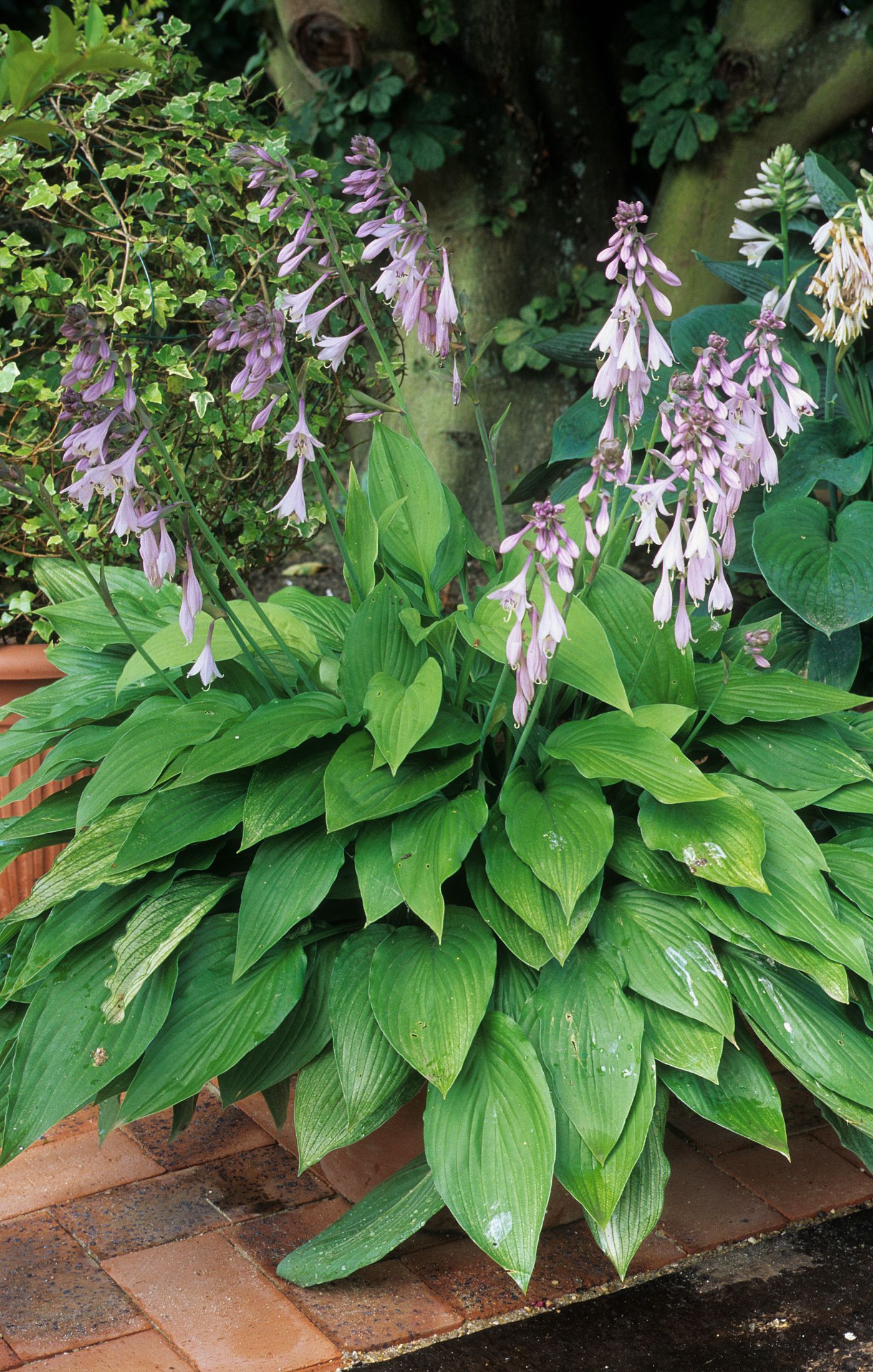
The best hostas for growing in containers
Some types of hostas are better for growing in pots than others. Most mini and small-medium hostas do well in containers, along with certain larger hosta varieties.
For example, the ‘Fortunei’ group hostas have fine roots that are well suited to containers. This group includes H. ‘Fortunei Albomarginata,’ H. ‘Fortunei Aureomarginata,’ and H. ‘Fortunei Hyacinthina.’
Here are some good hosta varieties for planting in containers:
- Blue Mouse Ears
- Patriot hosta
- Halcyon hosta
- Fire & Ice hosta
- Guacamole hosta
- Francee hosta
- June hosta
- Candy Hearts hosta
- Corkscrew hosta
- Green Fountain hosta
- Lancifolia hosta
- Hadspen Samphire hosta
- Pizzazz hosta
- Brim Cup hosta
- Platinum Tiara hosta
- Diamond Tiara hosta
- El Niño hosta
Other hostas like the ‘Elegans’ group hostas and the ‘Tokudama’ Group tend to only last a couple of years in a container due to the thick root core they develop under the crown. These plants typically need to be potted up into a larger container or planted in the ground.
Some hostas are simply too large to grow inside containers that are small enough to be moved around the garden. This includes popular giant hostas like ‘Blue Angel,’ ‘Earth Angel,’ and ‘Empress Wu.’ These very large cultivars are best planted directly in the ground.
Overwintering hostas in pots
Hosta growers in zones 3-7 generally experience significantly cold periods during the winter. Container-grown hostas need more care than in-ground plants in these colder climates. While hostas do require a few weeks of temperatures below 40°F (4°C) for winter dormancy, potted plants are susceptible to heaving if the plants freeze and thaw repeatedly.
Wait for the temperature to drop in autumn and the leaves to die back to the ground on their own. Then cut back the hosta to ground level and move the planter pot to a sheltered location like a garage, garden shed, or covered porch for the winter. Look for a place that is out of direct sunlight and stays at a relatively consistent temperature. Repeated freeze-thaw cycles are hard on both the plant and the pot.
Water the potted hostas a few times during the winter (perhaps once per month). Place them back out in the garden in the spring after the danger of hard frost has passed.
If no suitable winter storage place is available, consider digging a hole in the garden and placing the pot down into the hole in the fall so the ground will insulate the roots. Just remember to dig the pot up in the spring when the ground thaws! Alternatively, take it out of the pot and transplant the hosta out into the garden.


